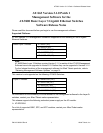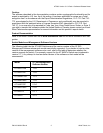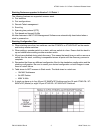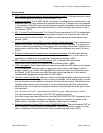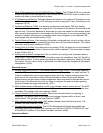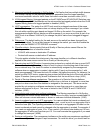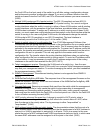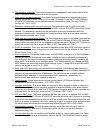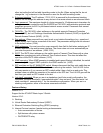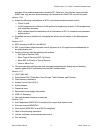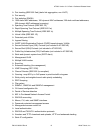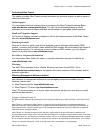
AT-S63 Version 3.1.0 Patch 1 Software Release Notes
PN 613-000915 Rev A 7 Allied Telesis, Inc.
the Fault LED on the front panel of the switch to go off after saving a configuration change
and before saving another configuration change. If you are in a different location from the
switch and cannot view the Fault LED, wait 30 to 45 seconds between your save commands.
(2683)
Multiple VLAN modes and IPv4 packet routing. The 802.1Q-compliant and non-802.1Q-
compliant multiple VLAN modes do not support IPv4 packet routing. You cannot configure
routing interfaces when the switch is running in either of these VLAN modes, and all existing
routing interfaces, with the exception of the local interface, are deleted when one of these
VLAN modes is activated. To assign an IP address to a switch running one of these VLAN
modes, you must create one routing interface and designate it as the local interface while the
switch is running in the user-configured VLAN mode, and afterwards change the switch’s
VLAN mode to 802.1Q-compliant or non-802.1Q-compliant. The local interface is
automatically moved to the VLAN on port 1 of the switch. (3806)
Switch to switch upload of a configuration file. The AT-S63 Management Software User
Guides state that the routing interface commands in the configuration file on a master switch
are retained when the file is uploaded to a slave switch. This is incorrect when the file being
uploaded is the master switch’s active configuration file. To prevent an IP address conflict on
the units, the transfer automatically removes all routing interface commands from the active
configuration file as it is uploaded. This rule only applies to the master switch’s active
configuration file. The transfer retains the routing interface definitions when you upload any
other configuration file from a master switch to a slave switch. To avoid an IP address conflict
in this situation, it may be necessary to modify the IP address assignments of the routing
interfaces on the switch that received the file.(4272, 5873)
Telnet management session. Changing the VLAN mode of a switch (e.g., from the user-
configured VLAN mode to a multiple VLAN mode) from a remote Telnet management session
may end your management session. To continue managing the switch, you must reestablish
the management session (3806)
SNMPv3 management. The enhanced stacking feature is not supported from SNMPv3.
(4065)
AtiStkSwVlanConfigEntry MIB table. The response time of the management firmware on the
switch will be slow if you have more than one instance of the AtiStkSwVlanConfigEntry MIB
table open at a time. (2231)
Compact flash card. Removing a compact flash card from the switch while the management
software is writing a file to it may cause the switch to stop responding to management
commands and forwarding network packets. To avoid this issue, never remove a compact
flash card from the switch while the Fault LED on the front panel is on. Wait for the Fault LED
to turn off before removing the card.(4253)
LACP priority value and the event log. A change to a switch’s LACP priority value is
registered in the event log with a message that reflects the current status of LACP, rather
than the change to the priority value. The log message is either “lacp:enabled” or
“lacp:disabled.” (3345)
MAC address-based VLANs and static trunks. The documentation states that the ports of a
MAC address-based VLAN form a community and that the assignment of a MAC address to
one port in a VLAN is equivalent to assigning it to all ports. This is true except in the case
where the ports of a MAC address-based VLAN encompass a static port trunk, in which case
the same MAC addresses must be assigned to all the ports in the trunk. (3249)



